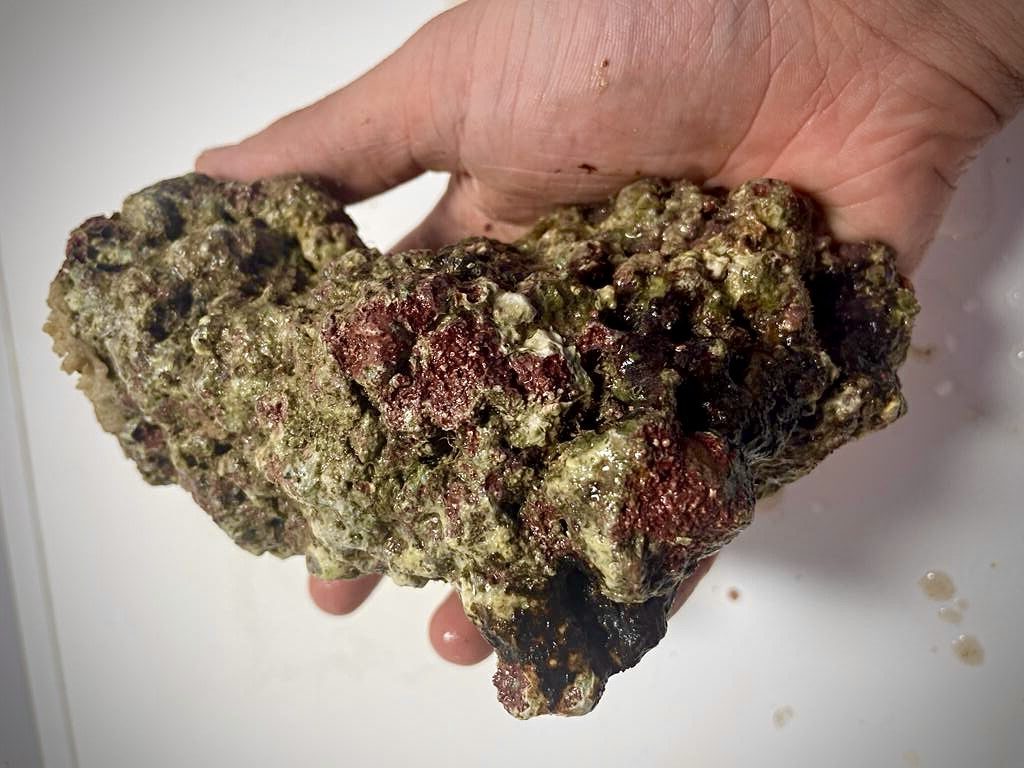Some latest generation Walt Smith cultured live rock has arrived at one of the UK’s top marine stores for appraisal and initial review. Not to be confused with Reef Rock 2.1, a dry man-made rock, Reef Rock 2.0 is also manufactured in Walt Smith’s facility only this time it’s matured in the sea in Fiji to gather all that natural reefing goodness.
Walt Smith International pioneered live rock collection from Tonga and Fiji but also the creation and maturation of manufactured live rock alternatives. Their live rock business stretches right back to 1992 but they started making their own alternative to wild collected live rock as far back as 1998. The sand/rubble/cement/pumice blend has constantly been tweaked to attain better shape, lighter weight, better porosity, and coralline algae coverage to mimic wild live rock, and Reef Rock 2.0 shows just how much it has developed in that time.

Paul Hughes heads up Advanced Aquarium Consultancy and is a well-known figure in the UK reefing industry. Due to efforts from TMC and Walt Smith Int AAC is one of the first to get their hands on this new rock. As the first in the UK to see and handle it, and with 33 years of experience under his belt we were keen to know Paul’s first impressions:
“I’ve seen and handled aqua-cultured ‘man-made live rock’ before from Walt Smith International and other companies, but it never really took off for us at AAC. This was at a time when we were still being spoilt by plenty of wild liverock CITES imports (now rare and sporadic in the UK,) and from various destinations around the world.”
“It was hard therefore to give these sustainable alternatives a fighting chance, versus the beauty of classic and reliable wild Fiji, Tonga or Indo Rock, to rapidly ‘birth’ new saltwater aquariums. This was also at a time (5-10 years ago,) when the focus had started to shift towards dry dead rock, surface-mined calcareous rocks, or artificially constructed painted dry /damp rock. Price also played a factor due to the vast air freight shipping costs required with live, versus a dry product.”
“From a personal point of view, the first version of this rock also wasn’t quite there either, freshly made in its look and bulky, without the coralline that we used to see on the hand-picked wild alternative. This shortfall of coralline is something we all need to get used to with the man-made live alternatives in the future however, and apply some patience as many of those ‘old school’ wild live rocks we compare this new rock against, could have been lying on the seabed for more than 20 years with their thick crustose mats. So expect less coralline even with 2.0, but if you understand its function and primary purpose, the important stuff is there in bundles!”

“It’s safe to say that Walt Smith Int. has put a lot of effort into this new bacterially diverse substrate to ‘plant’ our corals on, no doubt missing none of the bacterial ‘chains’ that take so long to establish with the dead/dry alternative, synthetic seawater and just a bottle of nitrifying bacteria.”
At AAC, we do still sell very small quantities of wild live rock when we can find carefully collected resources, to help ‘seed’ struggling customer systems built around dead/dry rock and artificial seawater, but it will be fantastic to offer the chance of unlimited quantities of this sustainable live ‘sea blessed’ product from the ‘holy Island of liverock’ – Fiji – as a serious total aquascape alternative.
“Vinaka (thank you) to Walt Smith Int Fiji and Tropical Marine Centre London for organizing this sample for me, and I look forward to stocking it in the future.”
Prices will be announced soon but it’s expected to be somewhere in the region of current live rock pricing. Walt Smith has 800,000 kilos/ 1,763,698 lbs maturing in the ocean, so there should be plenty to go around.



